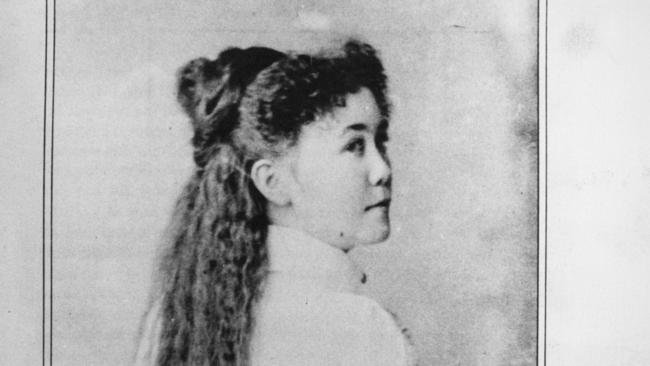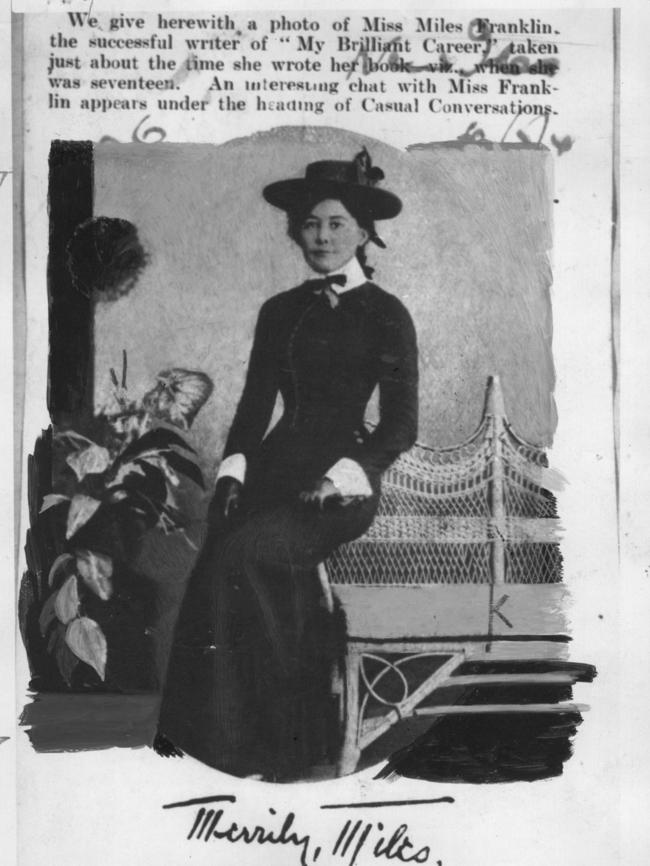The less than brilliant life of Miles Franklin’s sister
A new book considers life in 19th century Australia from the point of view of Miles Franklin’s little-known sister.

In her reimagining of the life of Linda Franklin, the sister of novelist (Stella) Miles Franklin, Amy Brown conceives Linda’s memories and reflections as she pens a “novel in thoughts”, one that her intense and forceful sibling might someday read.
A new wife and mother, and soon to suffer a fatal bout of pneumonia, Linda writes of trying to tell her “own story in the margins of [her sister’s] letter”.

Much of what Brown explores in My Brilliant Sister is encompassed by this image. For every Miles Franklin, for every passionate and headstrong woman who manages to repudiate the constraints of marriage and children, there is a clutch of equally desirous, equally yearning, women whose fate demands they repress their dreams and resign themselves instead to being “demure and dutiful”.
They are women, like Linda, who exist only in the periphery of their sisters’ lives.
Structured as a triptych (and wanly echoing Michael Cunningham’s The Hours) My Brilliant Sister is anchored by the extraordinary call to arms that is My Brilliant Career.
Ida, the narrator of My Brilliant Sister’s first act, is a high-school teacher. Her students are studying Franklin’s novel and Ida finds herself obsessed with the fate of Franklin’s younger sister, (rendered in My Brilliant Career as the pale and fragile Gertie). For Ida, Linda becomes “a sort of ghostly overlapped self who is with me all the time”.
Teaching secondary school was never Ida’s dream. Her work as a writer and academic has been sacrificed to her husband’s career and the needs of their young daughter, Aster. In the face of her overwhelming love for her child, and her recognition of the importance of her husband’s work, Ida struggles to assert her own needs.
After much bargaining with her husband, Ida eventually secures time to write, assuming Linda Franklin’s voice, thereby foregrounding the hopes and dreams of those women who lack the opportunity, and perhaps also the will, to do anything other than (as Linda notes of her own life) “shrink” into prevalent notions of womanhood.
Through the narratives of both Ida and Linda, My Brilliant Sister underscores the tendency of motherhood to induce an examination of not the triumphs of a life, but rather its mistakes.
The paths not taken – the paths that possibly should have been taken – become starkly illuminated. In this, My Brilliant Sister echoes other recent novels about motherhood, most notably Claire Kilroy’s Soldier Sailor, a dreamy, yet dark study of the existential obliteration that accompanies motherhood.
In both novels, the imagination – the capacity to conjure other lives – becomes its own potent means of survival, proffering both shape and boundary to a self that has been subsumed by maternity. In My Brilliant Sister, Ida not only gives material form to Linda Franklin, she also births a shadow version of herself, a “twin reabsorbed in utero, who in a way still sustains me”.

This is the conceit that drives My Brilliant Sister, that there endures within most women a tension, a persistent push-and-pull, that parallels the divergent “careers” of Stella and Linda Franklin, one sister full of passion, the other wanting to “be passionate”, one living a full and satisfying life, the other merely trying to imagine what such a life might be.
Ida’s “brilliant sister” Stella – a world-famous rock singer – abides yet “in the roots of my cells, in the beginnings of my body … [a] firebrand. An art monster.”
As a metaphor for those facets of self that women deny in order to function as wives and mothers, Stella is, in principle, splendid. In practice, however, her narrative – the third act of the novel – fails to ignite. There is not sufficient contrast between Stella’s life and the lives of either Ida or Linda to make us believe – to make us want to believe – that this is the woman within whom Ida’s (and by extension our own) suppressed aspirations have been realised. She is too full of ennui, of nebulous yearning and inaction, to bear anything more than the slimmest hint of the ambition, determination and passion with which Franklin imbues Sybylla Melvyn, the heroine of My Brilliant Career. Brown’s novel, therefore, lacks the counterweight it requires to succeed.
My Brilliant Sister nevertheless reminds us that for every Sybylla Melvyn, every Miles Franklin, there are a host of other women who, despite their own inherent desires, have been swallowed up by lives that are ordinary and unremarkable. “Did you ever once consider,” Linda asks her sister, “who was heating the water for your bath while you wrote, who made the tallow candle whose light you wrote by … who pretended to find needlework soothing and would mend your unravelling hems as you thumped at the piano?” The unfortunate irony is that it will always be the stories, not of those sisters carving at candles, but those thumping at pianos, that we, as readers, long to hear.
Diane Stubbings is a writer and critic, based in Melbourne.



To join the conversation, please log in. Don't have an account? Register
Join the conversation, you are commenting as Logout